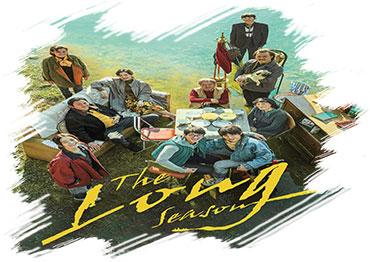Unlike Xin’s The Bad Kids, which was told from the perspective of three teenagers over one month, The Long Season focuses on the life stories of three elderly men over two decades. The show jumps back and forth between 1997, 1998 and 2016.
“We hoped to explore the individual’s relationship with the times and their fate through a story spanning two decades,” Xin said during a seminar held by the China Television Arts Committee in Beijing on May 17.
Xin said he aimed to transcend the crime genre to appeal to a larger audience. “So, we shifted focus a bit from the case itself and concentrated on depicting ordinary people’s lives to show how the times and existential problems affected each character,” the director said.
A primary theme is how SOE reforms of the late 1990s and their resulting massive layoffs affected the fates of families in the Northeast.
The region was among the first to industrialize after the People’s Republic of China was founded in 1949. Northeastern workers were proud of their relatively privileged positions at State-owned factories and their “iron rice bowls” – secure jobs for life. With its developed heavy industry, plentiful coal and agricultural output, the region earned the moniker “the eldest son of the PRC,” referring to its great contribution and leading position in the country.
However, SOE reforms shattered that sense of privilege and security as thousands of factories shut down and millions lost their jobs across the country. This disillusionment was pronounced in the Northeast, which in a matter of years went from a thriving industrial center to China’s “rust belt.”
The Hualin Steel Plant in The Long Season epitomizes the unprofitable, smaller State-owned factories at the brink of closure in the 1990s. Like many real industrial towns, the fictional Hualin was planned around its plant.
Workers persisted in constant anxiety over the state of their jobs, and staged protests against the factory’s mismanagement. In the end, none was spared. Middle-aged model workers like Wang Xiang and highly educated new hires such as Gong Biao were forced to search for odd jobs in an already gutted town. Another example is Li Qiaoyun, who in her late 30s had to work as a bar girl to support her disabled husband and son with leukemia.
For many viewers, these gritty portrayals hit close to home. Liu Yufei, 34, was born and raised in Changchun, Northeast China’s Jilin Province, where his parents worked at the State-owned Changchun-based First Automobile Works – the first auto plant to open after 1949.
“I relate with everything portrayed in this show – the characters, the factory and people’s values and mindsets. I almost feel like the show is about my family. I can see the traces of my mother in Wang Xiang’s wife and my uncle in both Wang Yang and Gong Biao,” Liu, who works at a Shenzhen-based consulting firm, told NewsChina.
“Many of my relatives were laid off. As a teenager, I could feel their intense anxiety when they talked about it. Once they left the State-backed factories, they realized there weren’t many job opportunities in a place without a well-established market. Many of them were filled with self-doubt and desperation,” Liu said.
Zhang Rong, 33 from Benxi in Liaoning Province, marveled at the show’s attention to detail. “The table clock, kettle, tea mugs, TV set – all these daily necessities, interiors and furniture are the things I remember while living in the factory dorms with my family,” said Zhang, a lawyer working in Beijing.
“At the time, people’s jobs, life choices, fates and even the things they used were highly homogenous. Therefore, when the reforms came at the turn of the century, the pain, confusion and dilemmas they faced were almost the same,” Zhang told NewsChina.

 Old Version
Old Version

